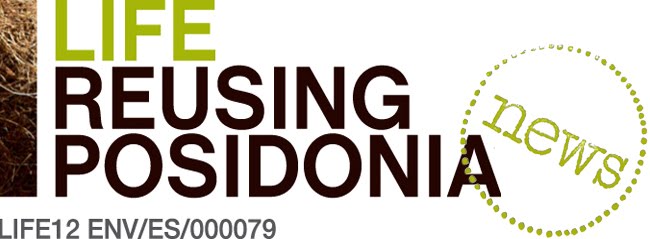We have used Posidonia oceanica (seagrass) dried as thermal insulation, just like it was used in traditional architecture, to build 14 social dwellings in Sant Ferran, Formentera, promoted by IBAVI.
The use of Posidonia as thermal insulation is possible because of the indoor air bubble content. In Formentera, one of the most abundant types of residue are dead Posidonia leafs. The annual surplus volume of Posidonia, around 4000 m3, would be sufficient to insulate all new dwellings on the island.
Protected plant
To clarify doubts, the Posidonia oceanica is a protected plant and its use must be authorised by the Ministry of Environment by applying to the Service of Protected Species.
It has been collected by the company awarded the contract for beach maintenance and has been limited exclusively to the areas in which the material accumulated on beaches exceeds the amount necessary to maintain the balance of the coastal dune ecosystem and extreme care has been taken not to affect this ecosystem, under the supervision of the environment technicians from the Council of Formentera.
Tests with the UIB
Posidonia does not require artificial treatment as sea salt acts as a preservative and a biocide. Despite this, in order to ensure its worthiness as insulation and to determine its thermal conductivity, three different tests were carried out in collaboration with the University of the Balearic Islands (UIB). The result was a success.
The first test involved the use of two PCE-HT 71 data logger sensors.
El segundo, mediante un horno de secado comparando los resultados con poliestireno expandido.
The second, using a drying oven, sought to compared the results against expanded polystyrene.
The third, involved using a heat flow meter pursuant to UNE-EN 12664:2002.
Dry Posidonia insulation provides a U: 0.2936 W/m2°C and Λ: 0.044 W/mK for a density of 185 kg/m3 and a thickness of 16 cm.
The process
Once the permission to use them were acquired and the tests with the UIB were carried out, we could build the roof. The compaction process to obtain 185 kg/m3 was performed manually, with participants using their hands and feet to push the leafs between the pallets that form the substructure to which the OSB boards are nailed.
Afterwards, the boards were water- proofed with EPDM and protected with sandstone slabs the form of paving.













